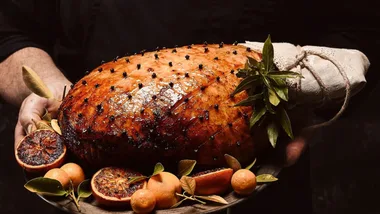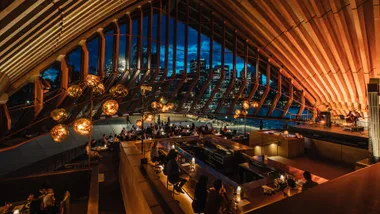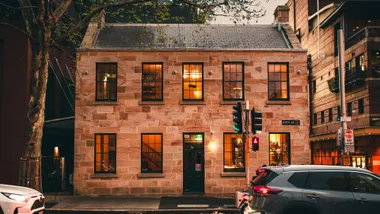It’s 7.45am and I’m just back from my daily espresso at La Cantinetta, the bar downstairs from my apartment in Bra, near Turin. Later, if atavistic cravings kick in, I’ll likely have something more substantial: a bacon sandwich, say, or a bowl of porridge. A “proper” breakfast in homage to my childhood in the north of England – though minus the cod-liver oil they used to force on us.
The punters at La Cantinetta, on the other hand, are grabbing their prima colazione. A combination of coffee of some kind – espresso, cappuccino, caffè macchiato, coffee with a drop of milk, latte macchiato, milk with a drop of coffee – and a pastry (a brioche or a cornetto, or a croissant). The “full Italian” – a couple of items wolfed down in a bar on the way to work.
In 2015 the Doxa market research agency conducted a poll in collaboration with AIDEPI, the Association of Italian Confectionery and Pastry Industries, which campaigns to improve the nation’s breakfast habits. It showed that 87 per cent of Italians always have the same things for breakfast and that a large portion of them do so on their own, in a bar.
Under my balcony, schoolkids are making a beeline for the bakery on the corner to stock up on focaccia for their mid-morning break. They may already have had a bite to eat at home: bread with Nutella or jam, yoghurt, biscuits, fruit, milky coffee – what hotels would call a continental breakfast, but nothing as specific as what people are having at La Cantinetta.
The bar is run by Sergio Miscia, 62, who’s been in the breakfast business since he began waiting in the station café as a teenager. He reckons he serves about a hundred coffees every morning. Not bad for a small provincial town, but nothing compared to the big city, Turin, where I used to live. There, a steady stream of people would flow into the neighbourhood bar for breakfast before taking the tram to work: white collars to the downtown banks and offices, blue collars to the massive Fiat Mirafiori plant in the suburbs. Standing in a row, cheek to jowl, along the zinc counter, like automata, half-asleep customers would dunk their cornetti into their cups – or sometimes their neighbour’s by mistake. Yes, I’ve seen it happen. The bar resembled a production line: the espresso machine steamed like a locomotive and, amid the clattering of cups and saucers, coffees were consumed in rapid succession. For the Fiat workers it was like a prelude to their shift in the factory. Which is fitting, since the quick breakfast at the bar is essentially an urban phenomenon, a product of last century’s industrial “miracle”.
This being Italy, there are regional variations on the caffè-cornetto combo. Notably in Sicily, where they wake up to granita with brioche or a brioche sandwich filled with ice-cream. The British food and wine writer Matthew Fort, a self-confessed Full Monty man, waxes lyrical about the coffee granita with whipped cream served at the Bar Irrera in Messina, while a neighbour of mine, Sebastiano Luca, just back from a trip to his native Syracuse, is already pining for the almond granita of home. The alternative is pretty tempting, if you have a sweet tooth.
In general, though, given the proverbial plenty of Italian food – from the Pantagruelian pranzo to the gargantuan cena – the Lilliputian prima colazione may seem a paradox. But Italy is full of paradoxes. When it was unified in 1861 (with Rome its capital), it was a largely agricultural country, yet it also boasted the oldest tradition of urban living in Europe. Before they set out for the fields at dawn, peasants either ate the meagre leftovers from supper the night before or packed them for a sort of proto-brunch later. Urbanites would make do with a coffee.
In her 1987 book Gastronomy of Italy, Anna Del Conte writes that morseddu, a Calabrian pig offal recipe, was “the only dish in the whole of Italy that used to be cooked for breakfast”. It’s a bold statement and it might not stand up in court. But if we take it at its face value, it does prove another of the Italian-born writer’s assertions: namely that in Italy “breakfast is not considered as a meal”.
Used to more substantial fare, travellers to Italy could be scathing. British writer Norman Douglas raged about “that morning thimbleful of black coffee”. In a memorable tirade, he claimed that the “customary and hateful apology for breakfast suffices to turn the thoughts of the sanest man towards themes of suicide and murder”.
Douglas was writing in 1915, the year Italy entered the Great War. Abortive attempts at colonial expansion apart, this was the first time the country had faced a major conflict with a national army of soldiers from different regions with different customs. At the time, an infantryman’s breakfast ration consisted of 120 grams of dried figs, or 150 grams of dried chestnuts or almonds or walnuts or hazelnuts, or 40 grams of cheese, or 30 grams of olives and canned sardines or anchovies, or 200 grams of apples. High in calories and flavour, it was the newborn state’s attempt to condense the peasant diet of the various Italian regions, but it was applied to all soldiers, city dwellers included. A year later, the ration was revolutionised to eight grams of roasted coffee and 10 grams of sugar.
The authorities were attempting to unify the army, making a concession to urban habit and recognising the stimulant properties of caffeine. In one of those little-noticed watershed moments in history, the Italian breakfast was being codified. The Italian government obviously didn’t share Douglas’s moral and medical outrage. What was good for soldiers leaping out of trenches towards almost certain death was surely good for workers, too. As Australian author Peter Robb has since written, “A Neapolitan coffee packs the kick of a mule. It keeps you going, and at minimal cost.”
The writers and scientists who “discovered” Italian food in the 1950s and ’60s weren’t impressed. American physiologist Ancel Keys, the populariser of the virtues of the Mediterranean diet in the US, declared that, “A croissant, doughnut or other bit of sweet pastry is a common accompaniment of the morning coffee but hardly qualifies as a regular ‘meal’ by traditional American standards,” while in her seminal book, Italian Food, English writer Elizabeth David doesn’t mention breakfast at all.
Things have evolved since then, in quality if not in quantity. Decades of Americanisation by Silvio Berlusconi’s television stations, of food movements and of international integration have made Italians more health conscious, more discerning about what they eat. The Doxa-AIDEPI poll also revealed that 44 per cent of Italians prefer “low-fat, low-calorie, healthy foods”. At La Cantinetta you no longer see the plastic-wrapped commercial products that were common in the 1970s. On display today are wholemeal and vegan brioches and croissants, and now you can sweeten your coffee with cane sugar, agave syrup, maple syrup or honey. Some establishments even offer a choice of different coffee crus.
Is a civilisation of the table without a breakfast to speak of a failed civilisation? The fragrance of freshly made coffee is wonderful, but what can beat the wafting aroma of bacon and eggs and all the trimmings sizzling in a frying pan? British playwright Somerset Maugham famously remarked that “To eat well in England you should have breakfast three times a day,” and today menus do, in fact, feature the all-day breakfast. But isn’t that a sad comment on the rest of the cuisine? The fact is that breakfast has always been subject to different interpretations around the world. De gustibus non disputandum est, said the Latins. Chacun à son goût, say the French. I say, when in Rome, do as the Romans do.










